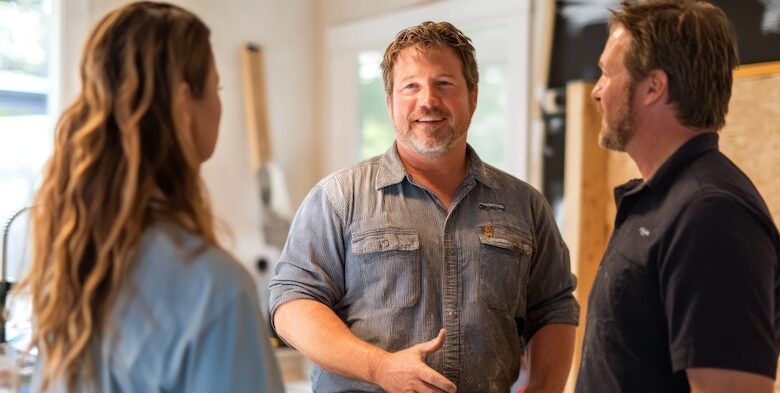Trust First, Sale Second: The RV Sales Strategy That Actually Works
Dealers and sales professionals should take the time to build rapport in order to fix stalled RV sales.

There are so many things that could cause stress for the average RV customer today. Interest rates are still quite high, Wall Street and the economy are unstable, and the political environment contributing to all that is just as crazy as ever. The residual effects of this tends to create anxiety for customers trying to decide whether to pull the trigger on the purchase of an RV.
Customers are downright nervous and are holding tighter to their wallets more now than in previous years. Some are still actively looking, but making the decision to buy is harder for them than in recent memory. The last few years have been quite lean for too many RV salespeople across the country. Some have even left the business as a result.
The need for customers to feel comfort and rapport with their salesperson has always been a major factor in helping them decide if they are comfortable saying yes to buying, but all this has made customers downright edgy and nervous. As a result, there is more pressure than ever for salespeople to be more systematic in implementing the building blocks of trust in their customer interactions.
Fools Don’t Rush In
Jack Daly, one of the best sales trainers in the world and a personal friend — he wrote the foreword for my latest book “No Trust, No Sale” — says that selling is the “transfer of trust,” which hits the nail right on the head. Not doing so will dramatically reduce the chance a customer will buy today. Building trust is something that must be established before any discussion about budget, what product they may want, how they plan to use it or any company sales system steps.
However, for this to be effective, there are two decisions salespeople must make before adjusting anything in the first few minutes of a customer interaction.
First, they must accept and buy into the importance of helping a customer feel comfort and trust in the early stages of the meet and greet, and the risk of not doing so will dramatically lower their closing ratio. Second, they must accept that the decision to feel comfort and trust with a salesperson will be made on the customer’s terms only.
So many salespeople rush through those first few minutes when initially meeting a customer, because they are misguided by the illusion that quickly getting in front of the product will help their customer relax and feel comfortable. This is a detrimental miscalculation. Why? Because customers must first erase their preconceived notions about their salesperson and their intentions. Of course, everyone expects that their salesperson is going to try to sell them something, because that’s what they do. But they must first have faith in some basic truths about their salesperson before they will consider the benefits of any products the salesperson will show them.
In the first few minutes of a new encounter with a customer, before being put in front of any product, the salesperson must take steps to relax and calm them by doing the following:
-
- Listen to them
- Respect their budget, and do not try to “upsell” them
- Move at a pace that is comfortable for the customer
- Spend more effort on the “shopping” rather than the “buying”
- Show them an RV with features that will match how they plan to use it
- Try to sell them what best fits them, not what the sales manager wants to get rid of
As a result, salespeople must now carefully revise how they initially approach a customer and the first words they say, and pay closer attention to a customer’s body language to assess how comfortable they are before moving on to the next step. They need to slow down the initial process until they get clear signs the customer is relaxed and ready to move forward.
Making Customers Feel Comfortable
Many customers are too embarrassed or intimidated to say that they are not comfortable in those few tense meet-and-greet minutes, so it’s imperative that salespeople are looking for the nonverbal cues that clearly indicate that.
Most dealerships focus almost exclusively on product knowledge and the steps in their selling system when training RV salespeople, and some do a very good job at this. However, throughout the entire country, I have only seen a few that actually teach salespeople about building the rapport and trust that must be in place for customers to feel comfortable buying from them. Frankly, too many salespeople are horrible at this, which greatly contributes to the stigma associated with not only salespeople in general, but also the “perceived” fear customers feel because of it.
So, what’s the answer? Salespeople must take ownership of this themselves, focusing more on what they do and say when first meeting a customer and then make adjustments to improve.
Part of the problem is that salespeople can’t actually view themselves, their own body language and how they present themselves to a customer when meeting them.
When I was a sales manager and responsible for the training, development and results of my staff, I would observe what salespeople did and said, and generally how they presented themselves with a customer as soon as they walked in the door. From 40 feet away, I could tell exactly how the customer was responding to the salesperson even though I couldn’t hear a word that was being said, simply by observing the body language and nonverbal cues of both the customer and the salesperson. I could tell when a salesperson wasn’t achieving comfort, rapport and trust, again without even hearing one word. I observed so many attempts to solve this problem by rushing the customer out to the product, which as I stated earlier, just doesn’t work. This results in the customer, who after spending three to four hours with a salesperson looking at product, will walk out and say: “I want to go home and think about it.” It’s not because they are not happy with the product; it’s because they don’t trust the salesperson enough to say “yes” to buying.
The answer is right there in front of us all. It’s a building process that starts in those first few minutes. Comfort leads to rapport and rapport leads to trust. Trust is a major factor in the customer feeling comfortable enough to say yes to buying. With all the external negative impacts happening right now, decisions to buy are more based on emotion, rather than logic.
Take Matters Into Your Own Hands
Implementing this is also a decision on the part of the salesperson. Dealerships may not train on trust-building steps and techniques, so it has to be motivated by the salespeople themselves.
The single best way to do this is to recreate, word for word, how a customer interaction just occurred moments after the customer walks out the door. Stop and think, in a step-by-step manner, what just happened, starting with the customer walking in the front door — what you said, how they responded, how you responded and what happened from there.
If you do this, you will likely remember the key moments that changed the atmosphere of the customer interaction (good or bad), where rapport and trust were built or lost. Doing this will help you craft a better way to say things going forward, or if you said something that worked well, how you can repeat it with the next customer.
A key thing to remember here is that little things matter. When really digging in and fine-tuning your approach, you will be able to string together a series of improvements that will result in your increased ability to build trust with your customers.
One last thing, if you are salesperson, take this seriously and act on it. While talking to salespeople all over the country, I am convinced that top salespeople are drilling down and doing these things, and that is precisely the reason why they’re outselling you every month.



